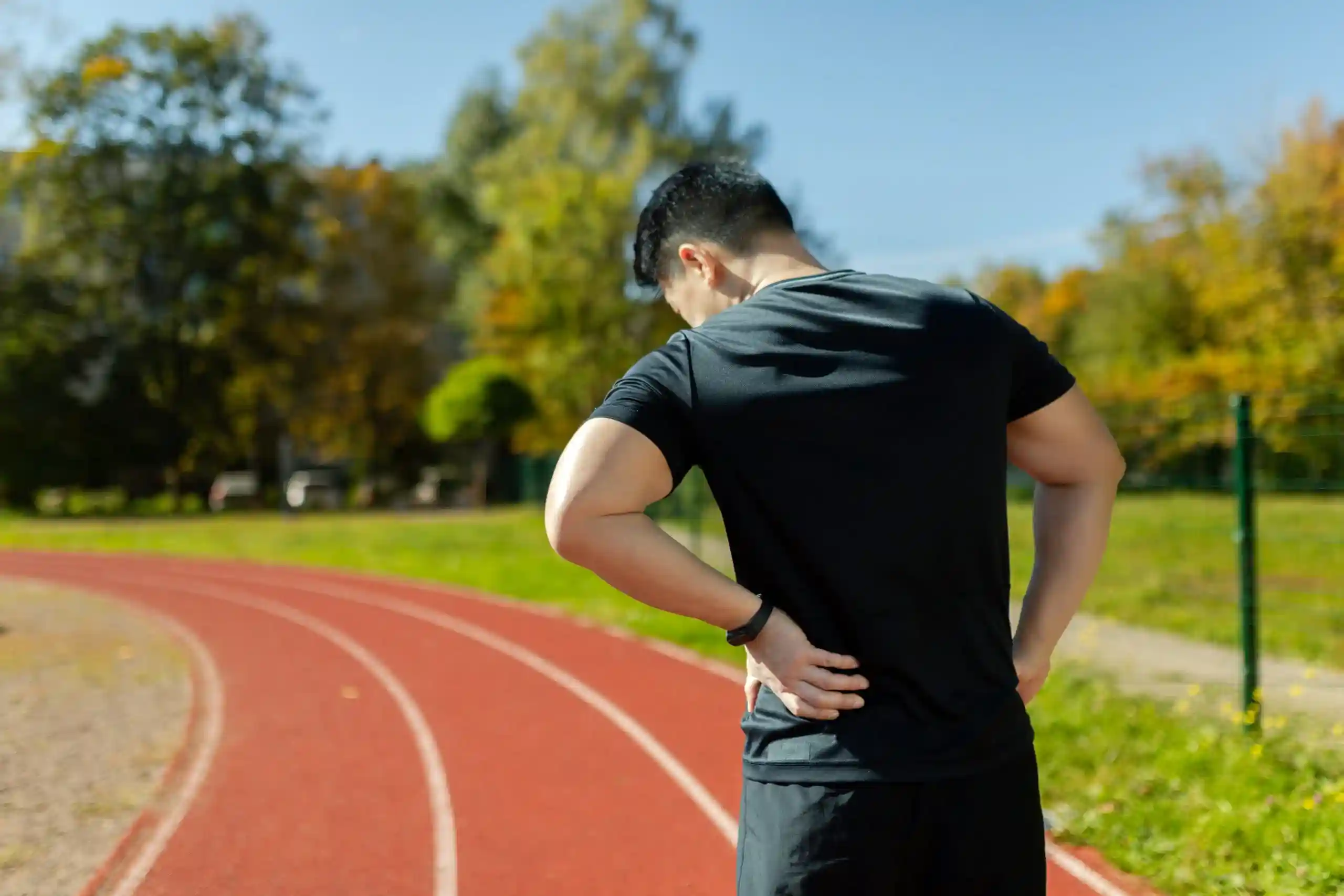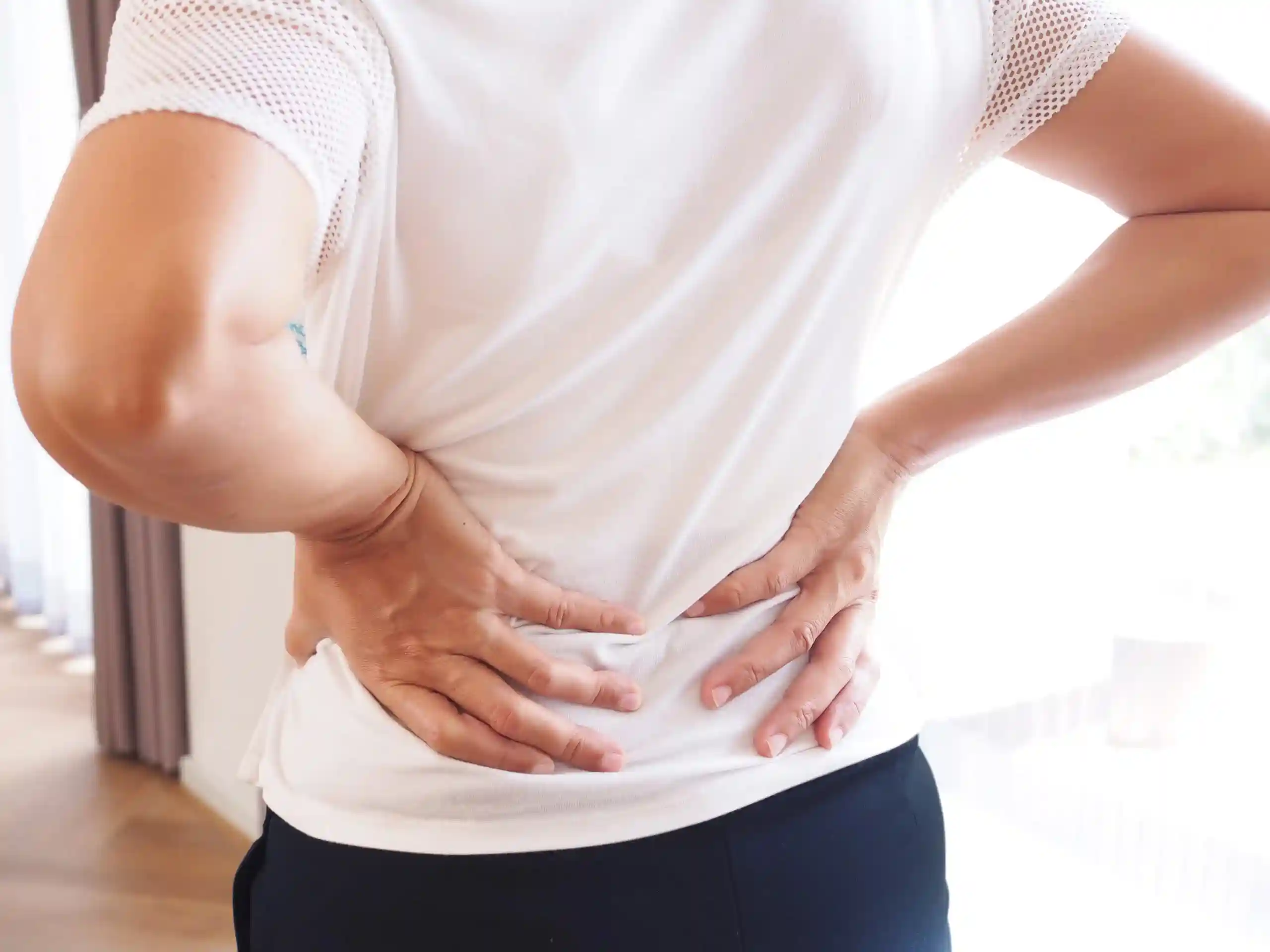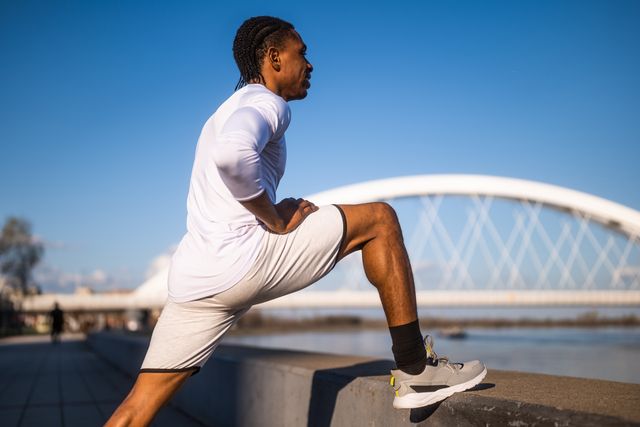Back pain after long runs is a widespread problem. As the distance increases, many runners begin to experience sharp pain in the area between or under their shoulder blades. More often, the trigger for back pain is running or long walking.
Such pain is often experienced by beginners, especially those who exercise without a trainer. This happens for several reasons: incorrect running technique, posture, and weak back muscles.
We will explain the different types of back pain caused when running.

Overweight and Age-Related Changes
Overweight people have much higher levels of pressure, so they often complain about back problems. Intervertebral cartilage becomes less elastic with age and is gradually destroyed, leading to osteochondrosis, protrusions, and hernias.
The muscle corset tries to compensate for the distortions of the spine, so some muscles become hypertonic, while others, on the contrary, atrophy.
Muscle and Nerve Issues
Muscle spasms due to dystrophic-degenerative diseases of the musculoskeletal system are the most common cause of lower back pain, which worsens with movement.
Since the altered structures cannot fully absorb shock during walking and running, the discomfort at this time becomes especially unbearable. Located in the lumbar and pelvic region, the pelvic and ilium bones, hip joints, and articulations are innervated by nerve fibers extending from the lower part of the spinal cord.
With osteochondrosis and hernia, nerve fibers are often pinched, and the patient experiences sharp, acute pain that prevents him from moving. Up to 75% of cases of lower back pain when walking occurs in cases of intervertebral hernia and its consequences.
Pain Localization

Depending on the location of the pain, it is possible to determine which nerve roots have been pinched preliminarily. Pain in the lumbar spine indicates damage to the sciatic nerve, the buttocks, the gluteal nerve, the coccyx, and the cauda equina plexus.
Other unpleasant symptoms often accompany painful sensations; for example, when a nerve is pinched, the patient complains of numbness in the legs, and with arthritis, there is an increase in body temperature and general malaise.
In any case, you should never tolerate discomfort, as the situation may worsen and lead to loss of ability to work. If pain occurs, which intensifies with movement, it is necessary to reduce the activity level as much as possible. In the acute period of the disease, you should not stretch, do exercise therapy, “correct” the spine, or attend massage sessions.
To establish a diagnosis, you should contact a meteorologist, neurologist, or orthopedist, who will prescribe the necessary examination and treatment.
1. High load on the upper back
Since the whole body works while running, the legs and body become tired towards the end of a long workout.
As a result of this, unbeknownst to us, the head begins to outstrip the body, stretches forward, and we begin to slouch. The head moving in front of our body puts additional stress on the upper back.
It’s the same with the head: our body has to involve many more muscles in the work than in its correct position.
2. Poor posture while running
We can hold them either too high or too close to the body. This usually happens when we get tired: our shoulders rise, and excessive tension appears.
In addition to this, some people begin to swing their arms too much from side to side, while others, on the contrary, keep them too tense and motionless. The arms should move in the correct path: the fist is at the level of your hip and then rises to the elbow of the second bent arm.
3. The origin of pain may not be where it hurts.
Just because you feel pain in certain places does not mean that they are the source of pain.
Thomas Hyde, a professor of sports medicine at Western States University, gives an example of a study examining the fascia. When the fascia in the lower spine is pulled, it causes a response in the opposite shoulder. That is, it is possible that pain in the upper back while running is caused by problems whose source is much lower.
Research suggests that pain may be caused by hypersensitive nerves located just under the skin. Due to the repetitive running movements, these nerves can get stuck in the skin tissue, resulting in irritation and unpleasant pain.
4. Change in pH level.
The production of lactic acid can lead to changes in acidity levels. The more you run, the more tired your muscles become, the more lactic acid accumulates in your body, and the stronger the nerve response and pain.
There are special gels that restore pH levels and acupressure that help the nerves. However, these are only auxiliary means, without which we again face the main problem – a weak back and incorrect running technique.
Dr. Shatto recommends specific exercises that will strengthen the lower and middle trapezius muscles, the rhomboid muscles, and the muscles along the spine and at the base of the neck: push-ups, push-ups using resistance bands, Superman floors, and the like.




